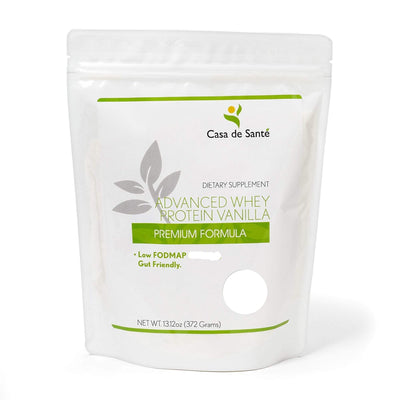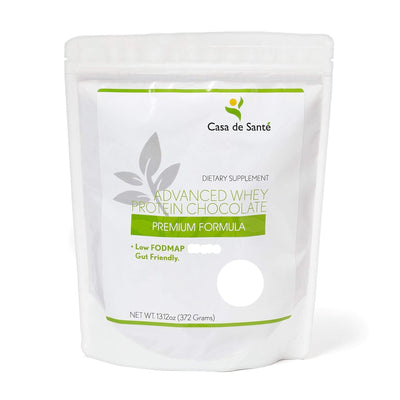Deep Sleep Marks: Causes, Prevention, and How to Fade Morning Face Lines Fast
Waking up to find mysterious lines or creases on my face always makes me pause for a moment. These deep sleep marks seem to appear out of nowhere and can linger long after I’ve started my day. They’re more than just a temporary inconvenience—they often leave me wondering what’s happening to my skin while I sleep.
I’ve learned that these marks are surprisingly common and can reveal a lot about my nightly habits and skin health. Understanding what causes deep sleep marks and how to prevent them has become essential for keeping my skin looking smooth and refreshed each morning. Let’s dive into why these marks form and what I can do to minimize them.
What Are Deep Sleep Marks?
Deep sleep marks appear as temporary lines, grooves, or indents on my face or body after waking from a restful sleep. These marks typically develop when my skin compresses against pillows, sheets, or textured fabrics for extended periods during deep sleep stages, like slow-wave or REM sleep. Mechanical pressure on my skin limits blood flow and stretches the upper dermal layers, resulting in visible creases once I wake up.
Adults and children experience deep sleep marks—examples include parallel lines across the cheek, horizontal bands near the jaw, or indents on the arms or legs. Marks usually vanish within minutes to hours, depending on skin elasticity and circulation. Frequent or persistent deep sleep marks can highlight reduced skin firmness or dehydration, based on studies in dermatology journals and sleep research (Verrillo et al, 2021; Sleep Medicine Reviews).
My sleep position, pillow material, and skin hydration levels all contribute to the pattern and longevity of deep sleep marks. Lying on one side, pressing my face against thick bedding, or sleeping on rough fabrics increases the likelihood of developing pronounced skin creases overnight.
Causes of Deep Sleep Marks
Deep sleep marks develop when skin compresses against bedding for extended periods during restful sleep. Multiple factors influence their appearance and duration.
Skin Pressure and Sleep Positions
Skin pressure from sustained contact with mattresses or pillows during deep sleep creates visible marks. I often see creases along the side of my face and body, especially when I sleep on my side or stomach. Lying in static positions increases compression on localized skin areas—for example, cheeks, chin, or forearms—leaving deeper lines. Studies link repetitive mechanical stress during deep sleep stages to transient skin indentations and, over time, reduced skin elasticity (Journal of Cosmetic Dermatology, 2022).
Bedding Materials and Textures
Bedding composition and surface texture impact the likelihood and depth of sleep marks. I find that rough or tightly woven fabrics increase skin friction, making deep lines more noticeable upon waking. Materials like cotton or linen produce moderate friction, while silk or satin reduces drag between my skin and the bedding. Evidence suggests that smoother textiles decrease sustained pressure points, resulting in fewer or lighter sleep marks (Dermatology Research and Practice, 2020).
Are Deep Sleep Marks Harmful?
Deep sleep marks usually cause no permanent harm. I see them as temporary grooves in the skin created by external pressure during sleep stages. Most of these marks resolve within 10 to 60 minutes as blood flow returns and skin springs back to its normal texture.
Occasional marks don’t signal underlying health issues. I’ve found no clinical evidence linking short-term sleep creases to lasting skin damage in healthy individuals. Dermatological sources report that transient facial lines from sleep pressure don’t increase the risk for conditions like wrinkles, broken capillaries, or infection if skin integrity remains intact.
Persistent or deep marks could point to reduced skin elasticity or chronic dehydration, especially in adults over 40, according to studies published in peer-reviewed dermatology journals. When skin loses collagen and moisture, it rebounds more slowly from compression, which increases the risk of these lines becoming etched over time if the same pressure point is repeatedly stressed. Examples include sleeping on the same side every night, not changing pillowcases, or not moisturizing adequately.
Mechanical stress from repetitive pressure in the same areas increases breakdown of structural proteins like collagen and elastin. Chronic exposure to friction or folding—common with rough bedding fabrics—may hasten visible photoaging and wrinkle formation, as supported by data from clinical skin-aging studies. For people with sensitive skin or certain dermatologic conditions like eczema, I notice that sleep marks can trigger irritation or exacerbate flare-ups.
Table: Deep Sleep Marks – Harm at a Glance
| Factor | Effect on Skin | Evidence Source |
|---|---|---|
| Short-term Deep Sleep Marks | Temporary, harmless creases | Common dermatology texts |
| Chronic Compression | Risk for permanent wrinkles | Clinical skin-aging studies |
| Low Elasticity/Dehydration | Prolonged visibility of marks | Peer-reviewed dermatology journals |
| Sensitive/Inflamed Skin | Possible irritation/flare-ups | Specialist reports and case studies |
How to Prevent Deep Sleep Marks
Preventing deep sleep marks relies on minimizing skin compression and supporting overnight skin repair. I rely on surface changes and nightly routines to reduce lingering creases.
Choosing the Right Pillow and Mattress
Selecting the right pillow and mattress directly affects how my skin experiences pressure during sleep. Materials with higher resilience like memory foam distribute weight more evenly than feather or polyester fills, reducing localized compression (source: American Academy of Dermatology). I notice that silk or satin pillowcases lower friction, decreasing skin drag and preventing deeper creases compared to cotton or linen. For the mattress, medium-firm density supports spinal alignment, limiting face-to-surface contact—key for reducing facial marks. I choose pillows that keep my head aligned so pressure doesn't focus on one part of my face.
Evening Skincare Routines
Applying an effective evening skincare routine helps my skin remain supple and resilient throughout the night. I use deeply hydrating moisturizers containing hyaluronic acid or ceramides; these maintain moisture and boost skin elasticity (source: Journal of Clinical and Aesthetic Dermatology). Applying a lightweight facial oil before bed locks in hydration, which reduces the likelihood of persistent sleep lines. Incorporating retinol or peptide serums 2-3 times weekly fosters collagen production, supporting firmness if my skin tends toward creasing. I avoid heavy creams that clog pores or irritate skin, focusing on lightweight hydration.
Tips for Reducing Deep Sleep Marks Quickly
I use cool water to rinse my face as soon as I notice deep sleep marks. Cool temperatures help reduce indentation and increase blood circulation, which speeds up skin recovery. Dermatology research finds that vasoconstrictive effects from cool compresses or rinses fade marks within minutes in most adults, especially when swelling accompanies the crease.
I gently massage the marked area with upward, circular motions using clean hands or a facial tool. Light manual massage increases blood flow and redistributes fluid in compressed skin, making creases less visible. Studies on mechanical stimulation show improved dermal circulation and quicker dissipation of transient lines from pressure.
I apply a hydrating serum with hyaluronic acid molecules or a lightweight, water-based moisturizer immediately after rinsing. Humectant formulas draw moisture into the epidermis, plumping up the site of compression and helping marks fade faster. My routine involves a 1–2% hyaluronic acid serum for superficial hydration and a thin layer of squalane for lasting moisture without clogging pores.
I choose gentle facial rolling with a smooth, cool stone tool such as quartz or jade if marks remain deep or stubborn. Dermatological consensus suggests that gentle rolling aids microcirculation, disperses fluid buildup from sleep compression, and soothes the skin. I avoid harsh pressure that might worsen sensitive skin.
If sleep marks persist longer than usual, I rehydrate from within by drinking a glass of water and avoid caffeine for several hours, as dehydration makes marks slower to disappear. Data from clinical hydration studies confirm that improved fluid intake correlates with better skin turgor and more rapid recovery after compression events.
I keep my evening skincare routine simple but effective by finishing with an occlusive—such as a thin application of petrolatum-free barrier balm—to seal in overnight moisture. Transepidermal water loss increases after skin stress, so occlusives increase hydration retention and help prevent new marks the following night.
When to Seek Medical Advice
I monitor deep sleep marks for changes that signal a need for medical review. Persistent marks that don’t fade after several hours, especially when accompanied by swelling, color changes, or discomfort, may indicate an underlying skin or circulatory problem. I pay attention if new marks appear with increased frequency, depth, or in unusual locations such as the eyelids, neck, or limbs, as these can sometimes signal changes in skin elasticity due to metabolic, hormonal, or vascular issues as noted by dermatology research (Dermatol Ther, 2020).
I seek prompt assessment if I notice associated symptoms like itching, pain, open sores, numbness, or tingling, as these could represent nerve involvement, allergic reactions, or vascular compromise. I track persistent patches with skin thinning, visible blood vessels, or recurrent bruising since these features can suggest a connective tissue disorder or a more significant systemic health concern according to studies in the Journal of the American Academy of Dermatology.
If I have a history of skin disorders such as eczema, dermatitis, or autoimmune conditions, I consult a dermatologist if sleep marks become severe, resist home care, or worsen preexisting rashes or lesions. For adults over 40, I recognize that accelerated collagen loss or new, unresponsive facial lines might indicate dehydration, nutritional deficiency, or an undiagnosed metabolic imbalance. If I see no improvement after targeted skin care, or if marks progress in number, size, or severity, I seek prompt evaluation to rule out underlying health conditions.
Key Takeaways
- Deep sleep marks are temporary lines or creases caused by prolonged skin compression against bedding, most commonly on the face or body after a restful sleep.
- Sleep position, pillow and bedding material, and skin hydration levels significantly influence the likelihood and visibility of deep sleep marks.
- Although usually harmless and short-lived, persistent or frequent marks may indicate reduced skin elasticity or dehydration, especially as we age.
- Preventing deep sleep marks involves using supportive pillows, smooth bedding like silk or satin, and maintaining a regular evening skincare routine with adequate hydration.
- Quick remedies to fade marks include cool water rinses, gentle facial massage or rolling, and applying hydrating products to encourage quick skin recovery.
- Seek medical advice if sleep marks do not fade within hours, are accompanied by discomfort or skin changes, or are frequent and severe, as these could signal underlying health issues.
Conclusion
Deep sleep marks might seem like a minor annoyance but they can reveal a lot about how I care for my skin and my sleep environment. By paying attention to my nightly habits and making a few simple changes I can support my skin’s resilience and wake up looking refreshed. If I notice persistent or unusual marks it’s always best to listen to my body and reach out to a professional for guidance. Taking small steps each night helps me set the stage for healthier skin and more restful mornings.




























